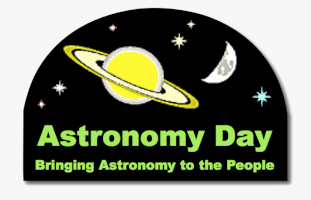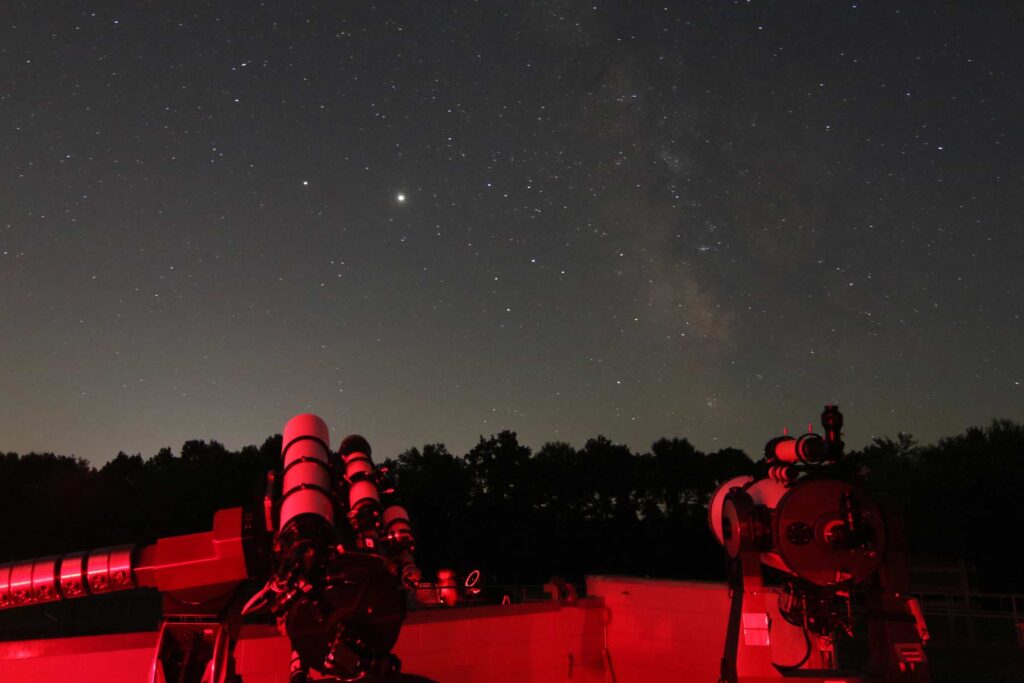
- This event has passed.
Astronomy Day – Spring 2024
May 18 @ 1:00 pm - 10:00 pm CDT
Free
Saturday May 18, 2024
The Minnesota Astronomical Society would like to invite you to attend the Astronomical League’s Astronomy Day activities at the Eagle Lake Observatory in Baylor Regional Park. Speakers are scheduled throughout the day and will give talks on astronomy and what there is to see. Door prize drawing will be held Saturday evening and include MAS merchandise, astronomy books and telescopes. The evening will continue with viewing through our array of telescopes observing some of the winter and early spring objects coming into view including the Orion Nebula, Crab nebula, the Sombrero Galaxy, the Whirlpool Galaxy, the Beehive Cluster, the Black Eye Galaxy and Hercules cluster among many others.
Schedule of Events
The observatory opens and the Star Party begins at 1:30 pm. We will begin with solar viewing and other daytime objects.
1:30pm – Nadia Abuisnaineh – Europa: Moon of Jupiter; Potential for Life
Summary – Did you know that Jupiter has 95 moons orbiting it, and one of those can potentially harbor life? Scientists are certain that beneath the icy crust of Europa, lies a vast salt water ocean. You know what that means? Where there is water, NASA will go! Come learn about the Europa Clipper mission, and how it is set to discover the habitability of one of the most beautiful moons in our solar system!
Bio: Nadia Abuisnaineh was born and raised in Minneapolis, Minnesota. For as long as she can remember, she always had a deep fascination with the universe. She was one of those kids in school that knew what she wanted to study in college at a very young age, and that never changed, even as she got older. Her love and enthusiasm for math and science allowed her to pursue a Bachelors of Science Degree in Astrophysics from the University of Minnesota. After graduating in 2011, Nadia dedicated her time and talents to multiple community organizations serving the youth and those in need, another promoting Islamic awareness and education, and an online Islamic University. In 2019, Nadia became a NASA/JPL Solar System Ambassador, where she joined a nationwide team of volunteers that speak to their communities about space and space exploration missions. Soon after, she worked at the Bell Museum, and helped launch their annual Statewide Star Party. She currently resides in Fridley, Minnesota, with her husband and three kids. She spends most of her time teaching her son and daughters how to navigate the world around them. She enjoys watching documentaries, walking around the state’s many lakes, swimming, and stargazing.
2:30pm – Maximilian Provolt – Exoplanets: Our Interstellar Neighborhood
Summary: We will discuss what exoplanets are, how they are detected, what we can find out about exoplanets, and the prospects for finding life in the universe. We will take a look at many strange examples of foreign worlds, but also others that seem strangely close to home.
Bio: A long time science enthusiast from a young age, now with the drive to make hobbies a passion. Born to share the universe with anyone who has an ear to lend, whether they like it or not.
4:00pm – John Fisher – What Are Stars Made Of?
Summary: What messages are hidden in the light of celestial objects? Join John in the classroom for a hands-on demonstration to learn about the different elements that make up stars and see how astronomers measure temperature. Featuring video contributions of Cecilia Payne. Afterwards, stick around to look at hydrogen and helium spectra.
Bio: John has been a member of MAS for 7 years and is a keyholder at Eagle Lake Observatory. He has had a lifelong interest in physics and mathematics and currently is focused on astronomical spectroscopy and spectropolarimetry. John enjoys doing outreach events and is always looking for new ways to engage newcomers to this great hobby.
5:30pm – Break
7:00 pm – Laura Hammerbeck and Tim Carlson – Let’s celebrate the sun!
Summary: Our sun; the heart of our solar system, essential for all life on Earth. Join Solar System Ambassadors Laura Hammerbeck and Tim Carlson on an exploration of our sun, from the depths of its core, to sunspots and solar storms, all the way to our Northern lights. Learn about the Parker Solar Probe mission, already in its sixth year of sun exploration. Celebrate the Star of our Solar System— let the sun shine!

Bio: Laura is a motivational and inspirational speaker. With over 20 years of teaching and communication experience, she presents solid information in an enthusiastic yet relaxed manner, with an ounce of humor on the side. Laura brings focus and energy to her audience. An amateur astronomer and space junkie, she is eager to share space exploration and study, as well as all its intriguing ideas with people of all ages.
Bio: Tim Carlson has been a space nerd from an early age. For his science fair project in 4th grade he built a model of the Apollo 11 Command and Lunar modules and explained how they came together for their trip to the Moon. He loves all things that have to do with space from NASA and Artemis and everything in between. He looks forward to sharing his love of space exploration.
8:00pm – Door Prize Drawing (Must be present to win)
9:00pm – Dave Falkner: laser light Constellation tour. Join Dave on the plaza for a tour of the night sky. (Weather Permitting)
Event Background
Astronomy Day is a grass roots movement designed to share the joy of astronomy with the general population – “Bringing Astronomy to the People.” On Astronomy Day, thousands of people who have never looked through a telescope will have an opportunity to see first-hand what has so many amateur and professional astronomers all excited.
Astronomy Day was born in California in 1973. Doug Berger, then president of the Astronomical Association of Northern California, decided that rather than try to entice people to travel long distances to visit observatory open houses, they would set up telescopes closer to where the people were – busy locations – urban locations like street corners, shopping malls, parks, etc.
His strategy paid off. Not only did Astronomy Day go over with a bang, not only did the public find out about the astronomy club, they found out about future observatory open houses. Since the public got a chance to look through a portable telescope, they were hooked. They wanted to see what went on at the bigger telescopes, so they turned out in droves at the next observatory open house.
For additional information, visit the Astronomical League’s website at https://www.astroleague.org/astronomyday/facts
Public star parties are open to all.
Additional information as well as directions can be found on the Eagle Lake Observatory web page.




